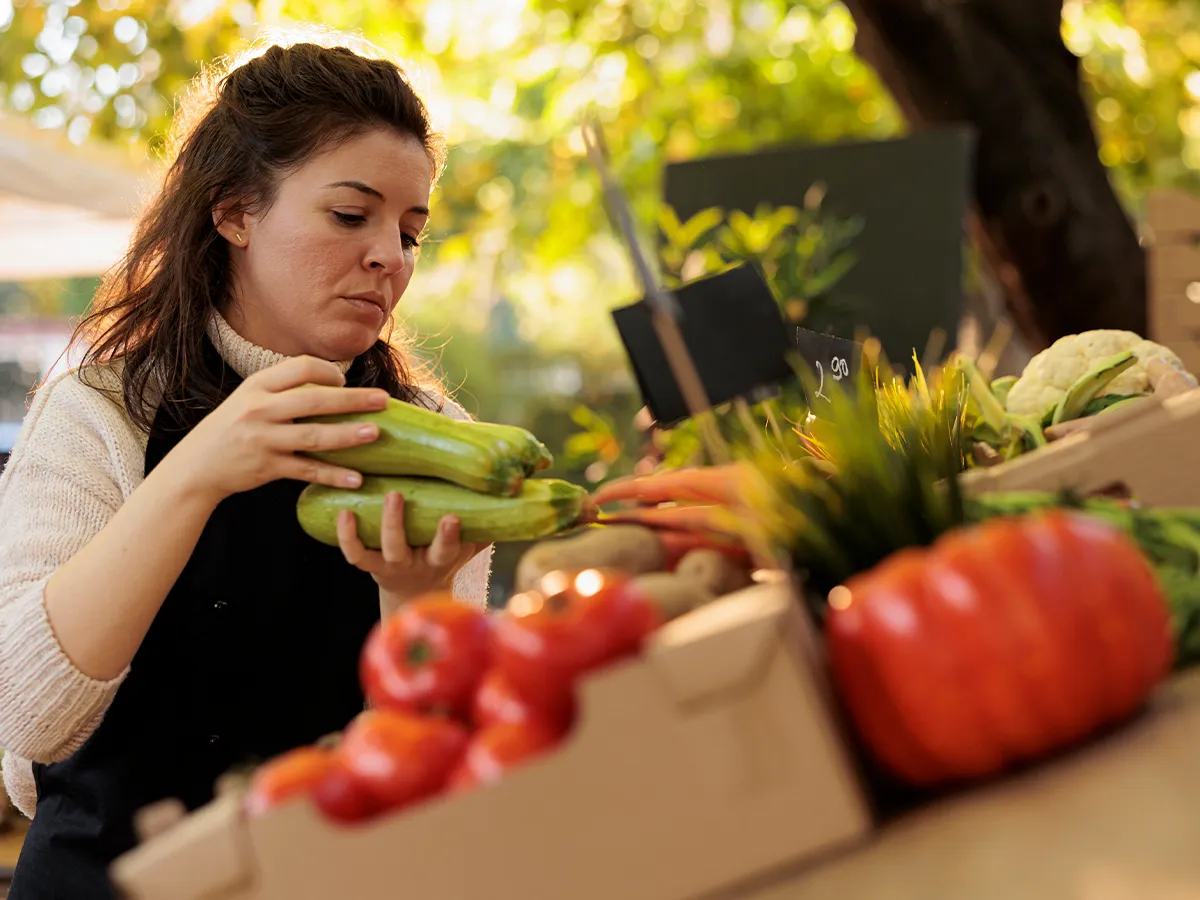Why We Need a More Equitable Food Marketing Environment
Table of Contents
The drive for equity in food marketing is crucial for small businesses. Like local markets, farm-to-table eateries, and seafood places. Resolving these disparities ensures that customers have more options. We have put together this article that delves into the definition, benefits, and impact of an equitable food marketing environment. So let’s dive in.
What is an Equitable Food Marketing Environment?
In an equitable food marketing environment, all food businesses will have equal marketing options. No matter what their size is. Every company will have equitable access to everything. Such as marketing resources, exposure, and client interaction. A food marketing firm can assist in achieving this by focusing on equitable marketing strategies.
Competing with big companies can be difficult for small businesses. Like family-run seafood places and local eateries. They may not have enough resources, which would restrict their marketing. An equitable food marketing environment equalizes the playing field. It ensures that all businesses can reach their target market without unjust rivalry.
A more equitable marketing environment also enables consumers to make better choices. When all businesses have equal opportunities, they are more likely to find many food options. Such as sustainable, healthful, and local food options. In this sense, communities, small businesses, and consumers all gain from an equitable food marketing environment.

Understanding Food Marketing Inequities

Food marketing inequities occur when marketing resources are unevenly distributed. This favors large brands over small businesses. Large food companies often have huge marketing budgets. This enables them to take over advertising. These huge budgets are too much for smaller companies. Such as local seafood restaurant and family-run eateries. Even though they provide unique, high-quality products, they struggle to reach potential customers.
This imbalance is often visible in social media ads, online search results, and traditional ads. For instance, a simple search for “seafood near me” may only turn up large chains because of paid ad placements. Smaller seafood businesses may not appear unless customers specifically search for them. Customers who wish to patronize local companies but are unable to do so are put at a disadvantage.
An equitable food marketing environment requires addressing these gaps. Everyone should have equal visibility in food marketing. Everyone should encourage a varied food scene with companies of all sizes.
Benefits of an Equitable Food Marketing System
A fair food marketing has lots of benefits for everyone. Such as clients, companies, and society. It gives customers easier access to a wider range of food options, including locally produced and healthful options. Fair competition among small food businesses allows consumers to find unique items that fit their dietary needs and values.
Small food-related businesses also gain a lot. Such as specialty seafood restaurant or family-run markets, etc. Fair marketing access enables them to reach a larger audience. That too without competing with large budgets. A food marketing agency can assist in bringing about fairly promoting strategies. This ensures that small businesses get the visibility they deserve.
Impact of Unfair Food Marketing Practices
Unfair food marketing techniques hurt small food businesses as well as consumers. Due to their limited resources, small businesses often fail to reach their target audience. Unique and healthful food options might thus go undiscovered. For instance, a local restaurant that places a high value on sustainable sourcing may find it difficult to compete with bigger chains in terms of online visibility.
This imbalance also affects consumers. They often receive messages that promote convenience or processed foods, overshadowing healthier options. This restricts customers’ access to small businesses’ fresh, locally sourced food options. Local and healthier options would become more visible in an equitable food marketing environment.
Additionally, when smaller businesses fail, local communities lose out on the economic benefits. These companies boost local value, support other local companies, and create jobs in the area. As a result, an equitable food marketing environment fosters a variety of food options and improves communities.


Strategies for Promoting Fair Food Marketing
It takes careful planning to create a fair food marketing environment. First, to reach their audiences, small businesses require low-cost marketing resources. Community-based platforms can offer cheap marketing resources to small food businesses. This enables them to interact with local customers and compete fairly.
Additionally, advertising transparency fosters equity. Consumers can make more informed decisions by clearly labeling food sources. Honest labeling helps small, local brands stand out. This results in a more equitable marketing landscape.
Working together, big brands and small companies can also increase equity. These partnerships can provide small businesses with a platform. It may also increase their visibility.
Role of Policy in Food Marketing Equity
Establishing fair food marketing practices requires policies. Government rules have the power to restrict marketing strategies while maintaining equity. Like, limiting large corporations’ excessive advertising budgets might be beneficial. Fair food marketing practices include laws that support regional cuisine and prohibit fraudulent ads.
Equity can also result from small business subsidies. Small food brands are able to increase their marketing budgets thanks to these subsidies. These regulations increase the visibility of smaller brands. It also encourages consumers to choose from a wider variety of foods. Furthermore, tax breaks for promoting local and healthful foods can support ethical marketing. Communities and government agencies might partner to create ways that help small businesses. Such alliances raise consumer awareness of healthy options. These policies promote fair competition.

Challenges in Achieving Food Marketing Equity
There are several challenges to creating an equitable food marketing environment. Due to their huge marketing budgets, large corporations control the food industry. They can use sponsorships, social media, and heavy advertising to reach customers. Smaller food businesses have lack of resources. That’s why they find it difficult to become popular. In an ideal equitable food marketing, every company would have a fair chance to promote their goods.

Community Involvement in Food Marketing
To create fair food marketing, social engagement is crucial. Local markets and events are ways that societies can help small businesses. These events support a variety of foods. It also encourages face-to-face interactions between companies and customers. Community support ensures small businesses’ growth in equitable food marketing environment.
Additionally, local groups can inform clients about the benefits of shopping locally. They can host seminars on sustainable food choices. They should also focus on healthy eating. These gatherings support fair food marketing ways and small businesses.
Leaders in the community and local influencers can also help smaller brands. They generate interest and raise awareness by spreading information about close food businesses. To promote equitable marketing, community-driven steps increase the visibility of smaller brands.
Future of Equitable Food Marketing
Collaboration and ongoing innovation are crucial to the future of equitable food marketing. Digital tools made especially for small businesses might make things more equal.
These platforms provide low-cost methods to advertise to local customers. The food industry may become more inclusive as a result of this technology.
Online support for small food brands has the potential to raise awareness and bring about major changes. Customers can share their choice of regional food brands on social media. Assisting these brands helps promote the cause of fair food marketing ways.

frequently asked questions
What does an equitable food marketing environment mean?
An equitable food marketing environment ensures that all food businesses have equal chances to reach consumers. It implies that everyone has access to marketing platforms, visibility, and resources regardless of budget or brand size. Local and small-scale food businesses can compete with larger firms in an equitable environment. This gives consumers more locally sourced, diverse, and healthier options. This equilibrium aids in diversity and openness in the food sector. This is fruitful to companies and customers alike.
How can consumers contribute to a more equitable food marketing environment?
Consumers play an important role in creating a more equitable food marketing environment. Supporting local companies by buying their goods and telling others about them helps make smaller brands more visible. Other ways to support local food businesses include participating in community markets. You may also post information about small food businesses on social media.
What are the benefits of a more equitable food marketing environment?
A more equitable food marketing is beneficial to everyone. There is a greater range of food options available to consumers. This includes healthier and locally sourced options. Small food businesses are given a fair chance to grow. This boosts local economies and fosters community.
Conclusion
To support small businesses and give the public a variety of healthy options, it is vital to establish equitable food marketing. We can guarantee that all food businesses have equitable access to their target audiences by tackling marketing disparities. Customers benefit from this change since they can now choose from a greater range of healthy, local foods. Moreover, small businesses can prosper in a cutthroat market.


